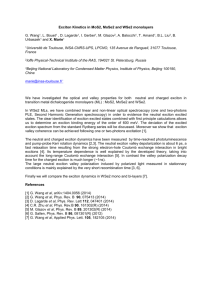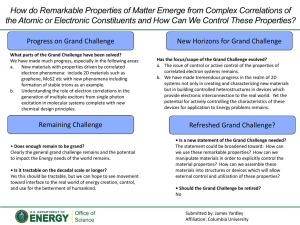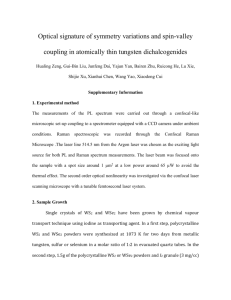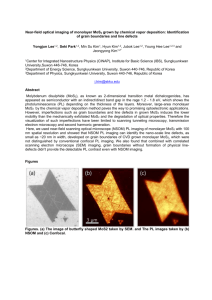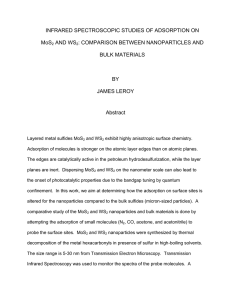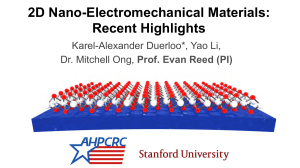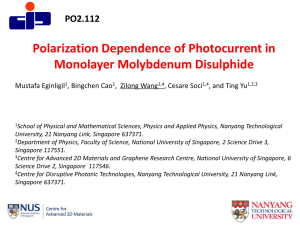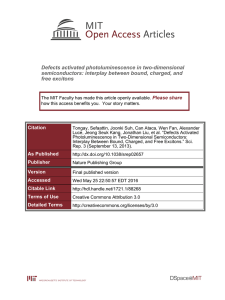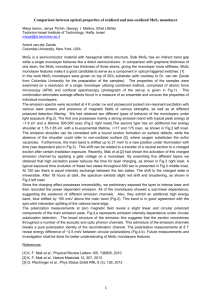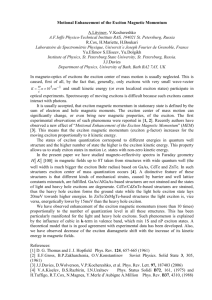Low-temperature photoluminescence of 2D Dichalcogenides and
advertisement
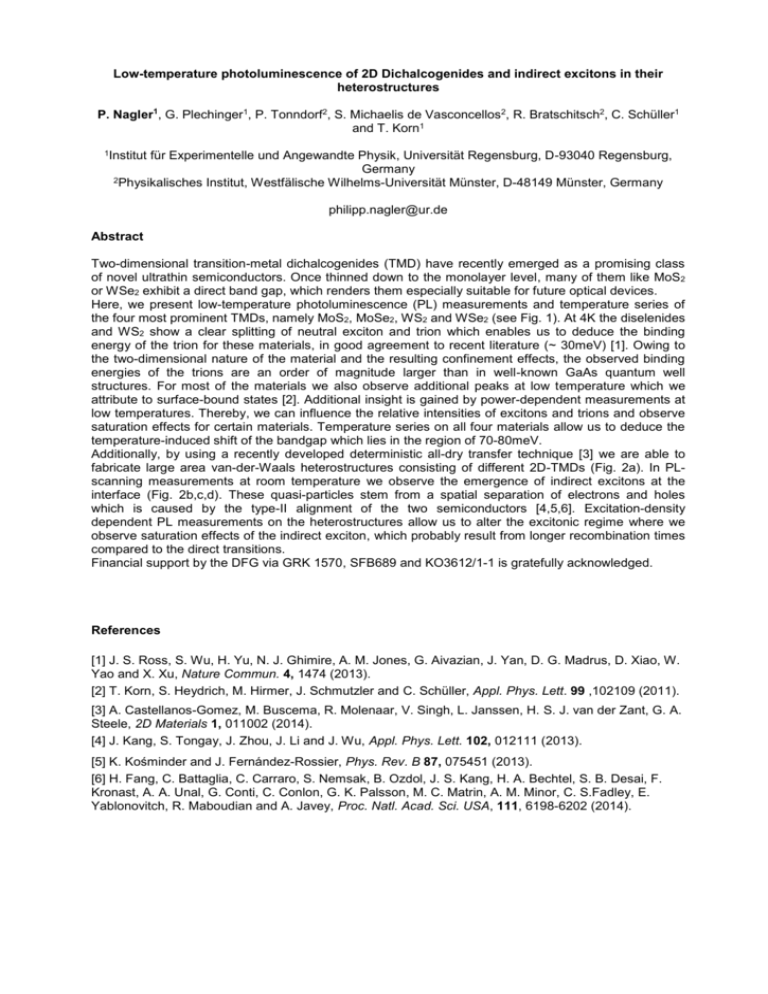
Low-temperature photoluminescence of 2D Dichalcogenides and indirect excitons in their heterostructures P. Nagler1, G. Plechinger1, P. Tonndorf2, S. Michaelis de Vasconcellos2, R. Bratschitsch2, C. Schüller1 and T. Korn1 1Institut für Experimentelle und Angewandte Physik, Universität Regensburg, D-93040 Regensburg, Germany 2Physikalisches Institut, Westfälische Wilhelms-Universität Münster, D-48149 Münster, Germany philipp.nagler@ur.de Abstract Two-dimensional transition-metal dichalcogenides (TMD) have recently emerged as a promising class of novel ultrathin semiconductors. Once thinned down to the monolayer level, many of them like MoS2 or WSe2 exhibit a direct band gap, which renders them especially suitable for future optical devices. Here, we present low-temperature photoluminescence (PL) measurements and temperature series of the four most prominent TMDs, namely MoS2, MoSe2, WS2 and WSe2 (see Fig. 1). At 4K the diselenides and WS2 show a clear splitting of neutral exciton and trion which enables us to deduce the binding energy of the trion for these materials, in good agreement to recent literature (~ 30meV) [1]. Owing to the two-dimensional nature of the material and the resulting confinement effects, the observed binding energies of the trions are an order of magnitude larger than in well-known GaAs quantum well structures. For most of the materials we also observe additional peaks at low temperature which we attribute to surface-bound states [2]. Additional insight is gained by power-dependent measurements at low temperatures. Thereby, we can influence the relative intensities of excitons and trions and observe saturation effects for certain materials. Temperature series on all four materials allow us to deduce the temperature-induced shift of the bandgap which lies in the region of 70-80meV. Additionally, by using a recently developed deterministic all-dry transfer technique [3] we are able to fabricate large area van-der-Waals heterostructures consisting of different 2D-TMDs (Fig. 2a). In PLscanning measurements at room temperature we observe the emergence of indirect excitons at the interface (Fig. 2b,c,d). These quasi-particles stem from a spatial separation of electrons and holes which is caused by the type-II alignment of the two semiconductors [4,5,6]. Excitation-density dependent PL measurements on the heterostructures allow us to alter the excitonic regime where we observe saturation effects of the indirect exciton, which probably result from longer recombination times compared to the direct transitions. Financial support by the DFG via GRK 1570, SFB689 and KO3612/1-1 is gratefully acknowledged. References [1] J. S. Ross, S. Wu, H. Yu, N. J. Ghimire, A. M. Jones, G. Aivazian, J. Yan, D. G. Madrus, D. Xiao, W. Yao and X. Xu, Nature Commun. 4, 1474 (2013). [2] T. Korn, S. Heydrich, M. Hirmer, J. Schmutzler and C. Schüller, Appl. Phys. Lett. 99 ,102109 (2011). [3] A. Castellanos-Gomez, M. Buscema, R. Molenaar, V. Singh, L. Janssen, H. S. J. van der Zant, G. A. Steele, 2D Materials 1, 011002 (2014). [4] J. Kang, S. Tongay, J. Zhou, J. Li and J. Wu, Appl. Phys. Lett. 102, 012111 (2013). [5] K. Kośminder and J. Fernández-Rossier, Phys. Rev. B 87, 075451 (2013). [6] H. Fang, C. Battaglia, C. Carraro, S. Nemsak, B. Ozdol, J. S. Kang, H. A. Bechtel, S. B. Desai, F. Kronast, A. A. Unal, G. Conti, C. Conlon, G. K. Palsson, M. C. Matrin, A. M. Minor, C. S.Fadley, E. Yablonovitch, R. Maboudian and A. Javey, Proc. Natl. Acad. Sci. USA, 111, 6198-6202 (2014). Figures Fig. 1: Low-temperature (4K) PL spectra of monolayer MoSe2, WSe2, MoS2 and WS2. The diselenides and WS2 show a splitting of neutral exciton (A) and the trion (T). All materials except MoSe 2 show surface-bound states (S) at low temperatures. Fig. 2: (a) Two-dimensional heterostructure consisting of a WSe2 monolayer on a MoS2 monolayer. The white square marks the area of the PL scan. Within the yellow triangle we observe the indirect exciton (b) False color map of the PL intensity (c) False color map of the PL peak energy (d) Representative PL spectra of the three different regions. The emission of the indirect exciton is weak and red-shifted compared to the emission of the isolated monolayers.
